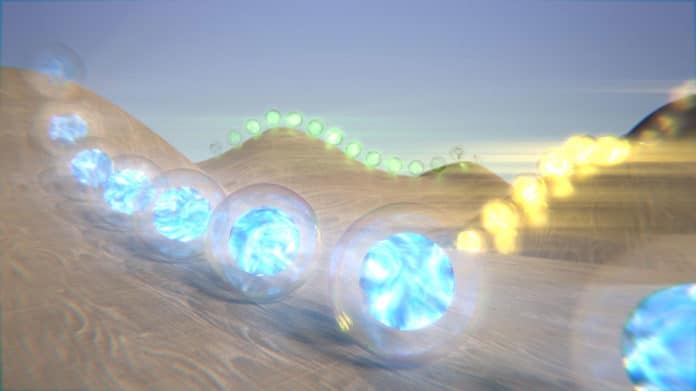Quantum computers mainly depend on the principles of quantum mechanics for information processing. These principles enable them to handle specific problems completely unsolvable for conventional computers. But even for quantum computers, fundamental limits apply to the amount of data they can process in a given time.
The way information is stored in a quantum computer is different. The information stored in quantum bits (qubits) resembles a wave rather than a series of discrete values. Physicists also speak of wave functions to precisely represent the information contained in qubits.
Information in traditional computers is linked by gates. Combining several gates allows elementary calculations, such as adding two bits.
Information in quantum computers is processed in a very similar way. Here, quantum gates change the wave function according to specific rules.
Dr. Andrea Alberti of the Institute of Applied Physics at the University of Bonn said, “Quantum gates resemble their traditional relatives in another respect: Even in the quantum world, gates do not work infinitely fast. They require a minimum amount of time to transform the wave function and the information this contains.”
In a new study, physicists at the University of Bonn and the Technion have investigated this Mandelstam-Tamm limit for the first time with an experiment on a complex quantum system. They did so by using cesium atoms that moved highly controlled manner.
Alberti said, “In the experiment, we let individual atoms roll down like marbles in a light bowl and observe their motion.”
Atoms can be described quantum-mechanically as matter waves. Their quantum information changes during the journey to the bottom of the light bowl.
Scientists wanted to determine when this “deformation” could be identified at the earliest. This time would then be the experimental proof of the Mandelstam-Tamm limit.
However, this is because every measurement of the atom’s position inevitably unpredictably changes the matter-wave.
Alberti says, “So it always looks like the marble has deformed, no matter how quickly the measurement is made. We, therefore, devised a different method to detect the deviation from the initial state.”
Scientists started by producing a clone of the matter-wave. They used fast light pulses to create a quantum superposition of two-atom states.
Gal Ness, a doctoral student at the Technion and first author of the study, said, “Figuratively speaking, the atom behaves as if it had two different colors at the same time. Depending on the color, each atom twin takes a different position in the light bowl: One is high up on the edge and “rolls” down from there. The other, conversely, is already at the bottom of the bowl. This twin does not move – after all, it cannot roll up the walls and so does not change its wave function.”
Using the quantum interference technique, scientists compared two clones at regular intervals. This allows differences in waves to be detected very precisely. This enabled them to determine when a significant deformation of the matter-wave first occurred.
Scientists varied the height above the bottom of the bowl to control the average energy of the atom. Average because, in principle, the amount cannot be determined precisely. The “position energy” of the atom is therefore always uncertain.
Professor Yoav Sagi, who led the partner team at Technion, said, “We were able to demonstrate that the minimum time for the matter-wave to change depends on this energy uncertainty. The greater the uncertainty, the shorter the Mandelstam-Tamm time.”
Two physicists had predicted the same. But, there was a second effect: If the energy uncertainty was increased more and more until it exceeded the average energy of the atom, then the minimum time did not decrease further – contrary to what the Mandelstam-Tamm limit would suggest.
Hence, physicists proved a second speed limit discovered two decades ago. Therefore, the ultimate speed limit in the quantum world is determined not only by the energy uncertainty but also by the mean energy.
Alberti said, “It is the first time that both quantum speed boundaries could be measured for a complex quantum system, and even in a single experiment. Future quantum computers may be able to solve problems rapidly, but they too will be constrained by these fundamental limits.”
Journal Reference:
- Gal Ness, Manolo R. Lam, Wolfgang Alt, Dieter Meschede, Yoav Sagi and Andrea Alberti: Observing crossover between quantum speed limits; Science Advances; DOI: DOI: 10.1126/sciadv.abj9119
